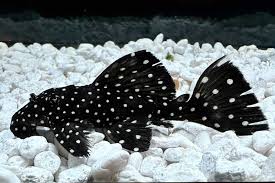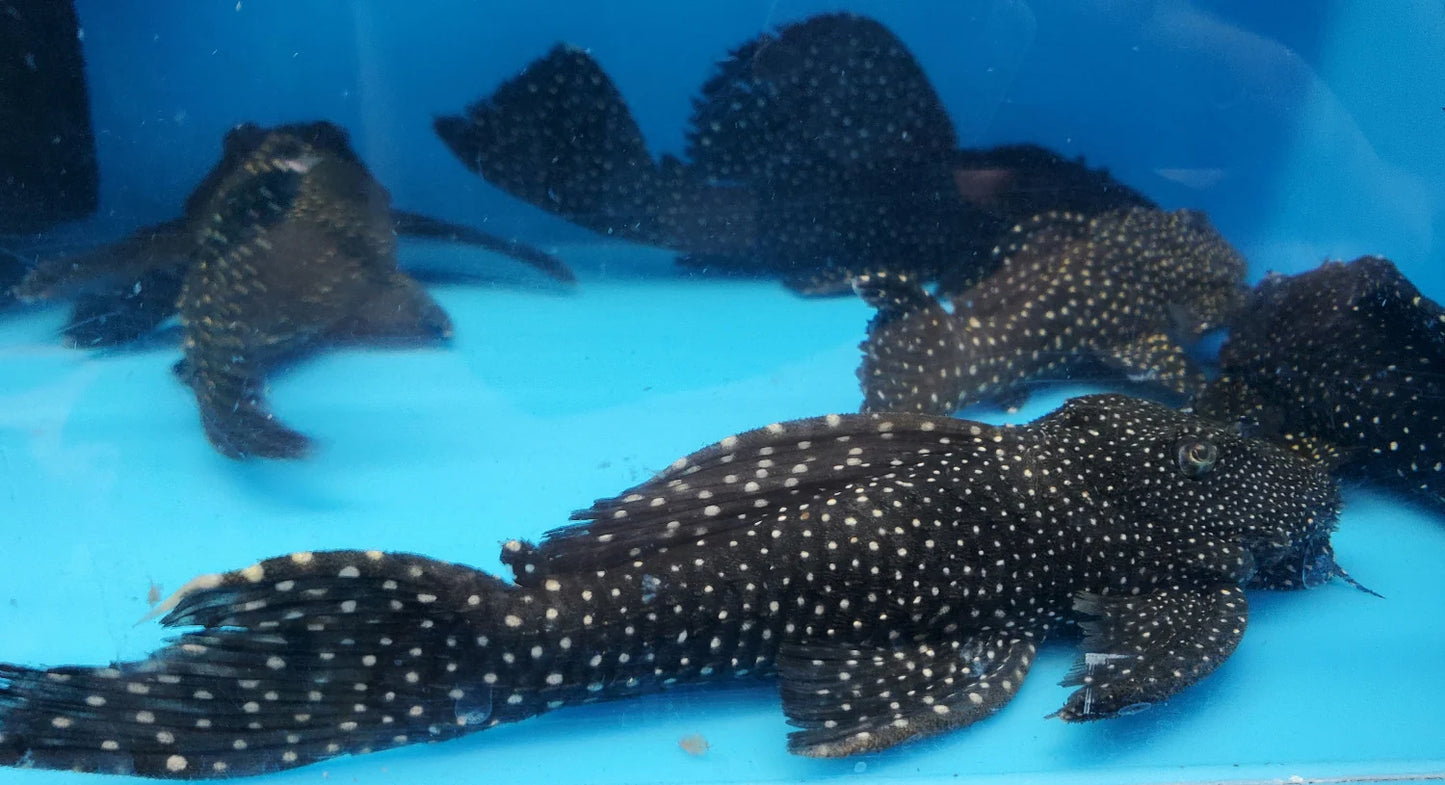Vampire Pleco
Vampire Pleco
Detailed Description
Detailed Description
The Vampire Pleco, scientifically known as Leporacanthicus galaxias, is a striking and unique species of plecostomus native to the Amazon and Orinoco river basins in South America. Named for its dark coloration and sharp, fang-like teeth, the Vampire Pleco is a visually captivating addition to aquariums. This species is highly sought after due to its exotic appearance, interesting behavior, and algae-eating capabilities.
🐠 Appearance:
-
Size: Typically grows to 5–7 inches (12–18 cm) in length, though it can sometimes reach up to 10 inches (25 cm) in larger tanks.
-
Coloration:
-
The body of the Vampire Pleco is generally dark brown to black, with lighter or golden spots that create a dappled appearance.
-
Its sharp, fang-like teeth and large pectoral fins give it a distinctive, almost vampire-like look, especially when viewed from the front.
-
The dorsal fin is high and triangular, adding to its unique silhouette.
-
The caudal fin (tail) is broad and forked, aiding its swimming.
-
🌿 Tank Requirements:
-
Tank Size: A minimum of 50 gallons is recommended for the Vampire Pleco, though larger tanks are preferable, especially if you're keeping multiple species.
-
Water Parameters:
-
Temperature: 74–80°F (23–27°C)
-
pH: 6.5–7.5 (slightly acidic to neutral)
-
Water Hardness: Soft to moderately hard
-
-
Environment:
-
Prefers planted tanks with plenty of driftwood and caves for hiding, as it enjoys creating secure spaces to retreat to.
-
A sand or fine gravel substrate is best, as it mimics the natural riverbed and reduces stress on the pleco.
-
Open swimming areas are essential, but the pleco also requires surfaces to graze on, such as rocks and glass, where algae can grow.
-
🏡 Behavior & Compatibility:
-
Temperament: The Vampire Pleco is generally peaceful, but can be territorial, especially with other bottom dwellers or similar-sized plecos. It may show some aggression when competing for food or hiding spots.
-
Tankmates:
-
Ideal companions include non-aggressive species such as tetras, gouramis, and other peaceful community fish.
-
Avoid housing with overly aggressive or larger fish that might bully the pleco or outcompete it for food.
-
The pleco may not do well with other bottom-dwelling species unless the tank is large enough to provide adequate space and hiding spots.
-
Product features
Product features
Materials and care
Materials and care
Merchandising tips
Merchandising tips
Share






